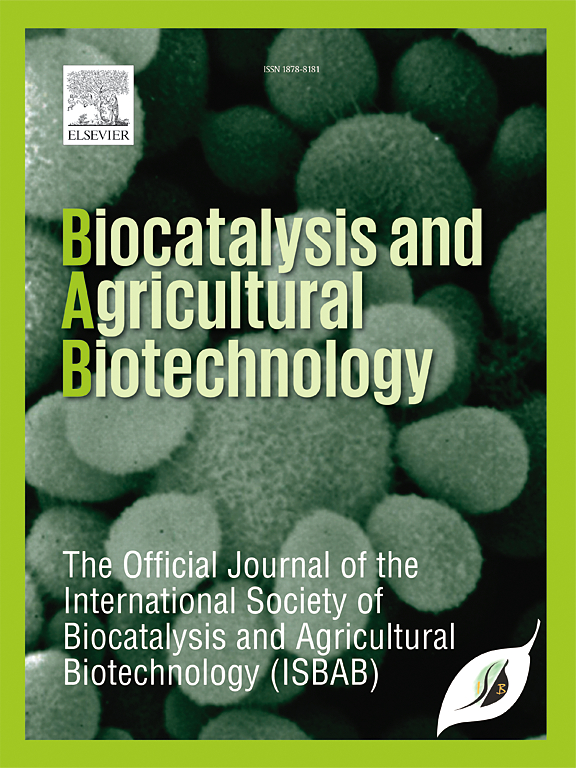Unveiling multifaceted bioactivity assessment of Psidium guajava and Azadirachta indica leaves extract as a potential natural tyrosinase inhibitors
IF 3.4
Q2 BIOTECHNOLOGY & APPLIED MICROBIOLOGY
引用次数: 0
Abstract
Tyrosinase is a critical enzyme involved in melanin production, playing a protective role against harmful ultraviolet radiation from the sun. However, excessive melanin synthesis can lead to dermatological issues, including skin irritation, redness, and hyperpigmentation. These conditions can be mitigated by employing tyrosinase inhibitors. Studies have demonstrated that aqueous extracts of Psidium guajava (guava) leaves and Azadirachta indica (neem) leaves exhibit significant tyrosinase-inhibitory activity. Specifically, Psidium guajava extracts have inhibition rates ranging from 68.58% to 79.51%, while Azadirachta indica extracts display 52.34%–56.48% inhibition rates. The antioxidant capacity of these extracts is closely linked to their total phenolic content. Fourier Transform Infrared Spectroscopy (FT-IR) analysis indicates that Psidium guajava extracts are abundant in polyphenols, including tannins and flavonoids, which contribute to their superior tyrosinase inhibition compared to Azadirachta indica. Moreover, GC-MS and HPLC analyses have confirmed the presence of biologically active compounds such as quercetin, gallic acid, vanillic acid, hydroquinone, caffeic acid, chlorogenic acid, rutin, catechin, sinapic acid, and ferulic acid, supporting the extracts’ anti-tyrosinase properties. Interestingly, the concentration of quercetin—a compound known for its antibacterial properties—is higher in Azadirachta indica leaves (45.42 ppm) than in Psidium guajava leaves (41.18 ppm). This higher quercetin content may explain why Azadirachta indica extracts demonstrate greater antibacterial activity despite their lower tyrosinase inhibition potential compared to Psidium guajava extracts.
求助全文
约1分钟内获得全文
求助全文
来源期刊

Biocatalysis and agricultural biotechnology
Agricultural and Biological Sciences-Agronomy and Crop Science
CiteScore
7.70
自引率
2.50%
发文量
308
审稿时长
48 days
期刊介绍:
Biocatalysis and Agricultural Biotechnology is the official journal of the International Society of Biocatalysis and Agricultural Biotechnology (ISBAB). The journal publishes high quality articles especially in the science and technology of biocatalysis, bioprocesses, agricultural biotechnology, biomedical biotechnology, and, if appropriate, from other related areas of biotechnology. The journal will publish peer-reviewed basic and applied research papers, authoritative reviews, and feature articles. The scope of the journal encompasses the research, industrial, and commercial aspects of biotechnology, including the areas of: biocatalysis; bioprocesses; food and agriculture; genetic engineering; molecular biology; healthcare and pharmaceuticals; biofuels; genomics; nanotechnology; environment and biodiversity; and bioremediation.
 求助内容:
求助内容: 应助结果提醒方式:
应助结果提醒方式:


